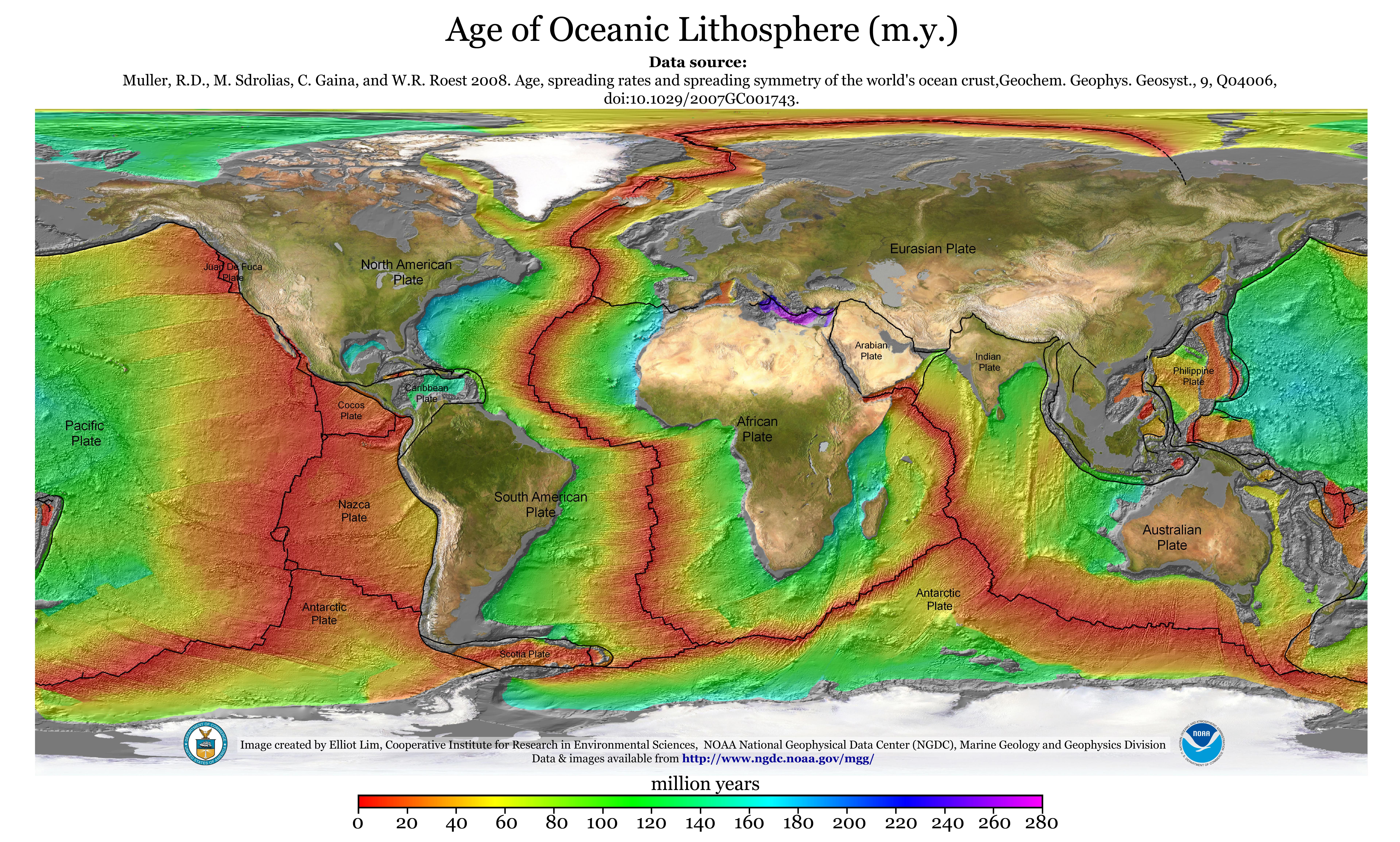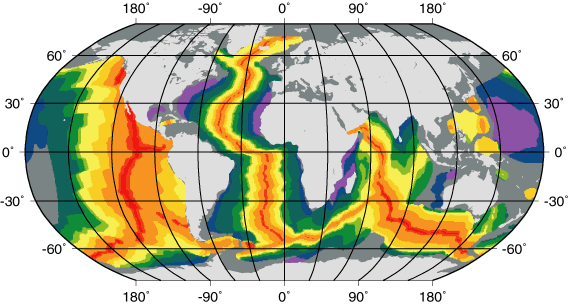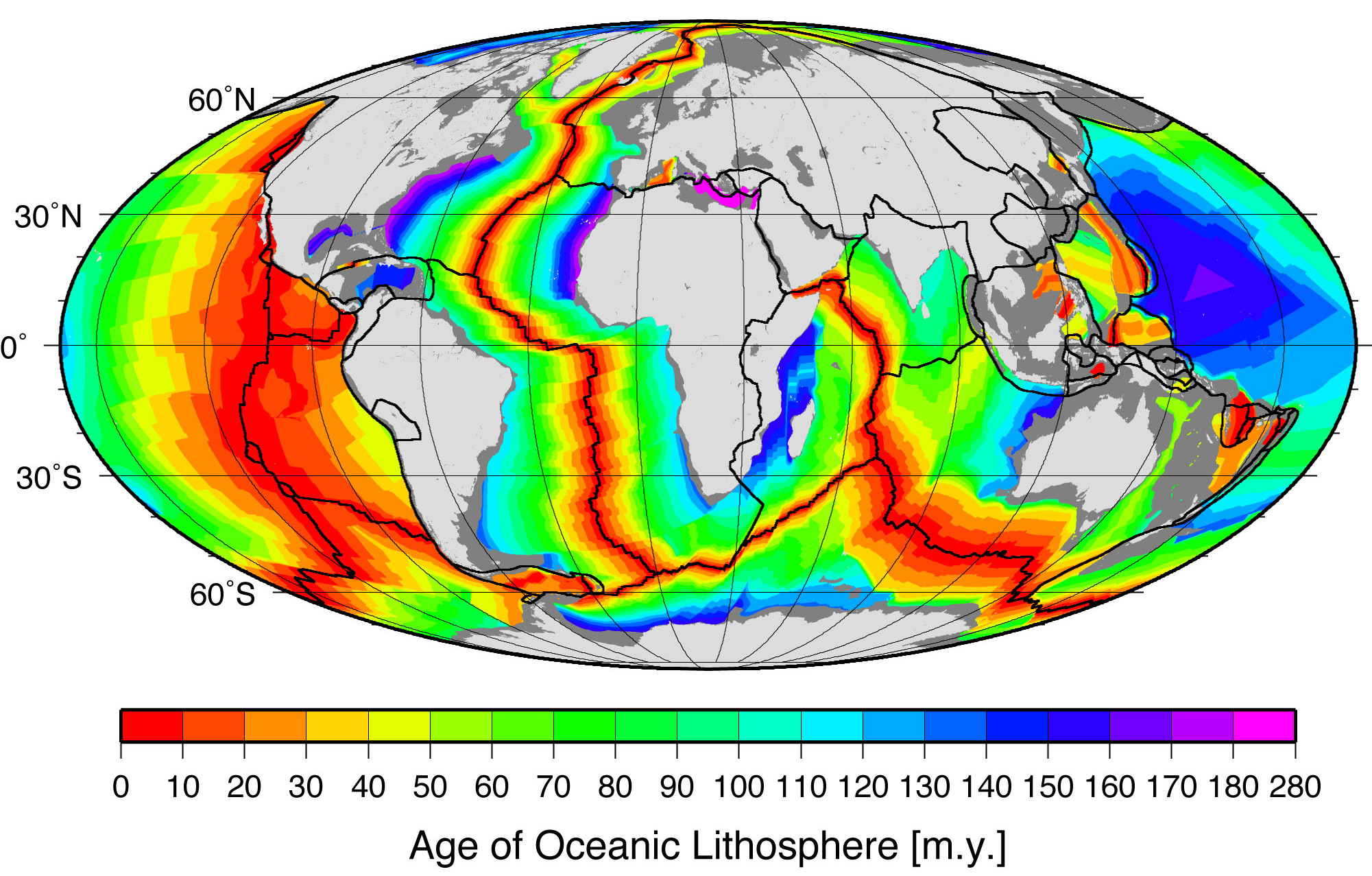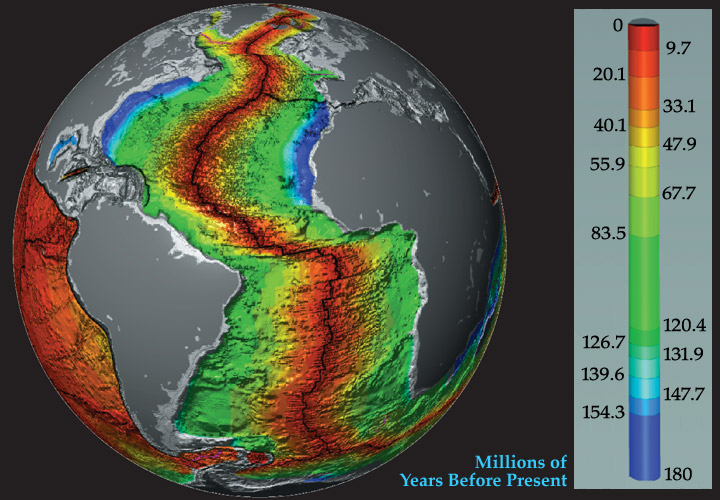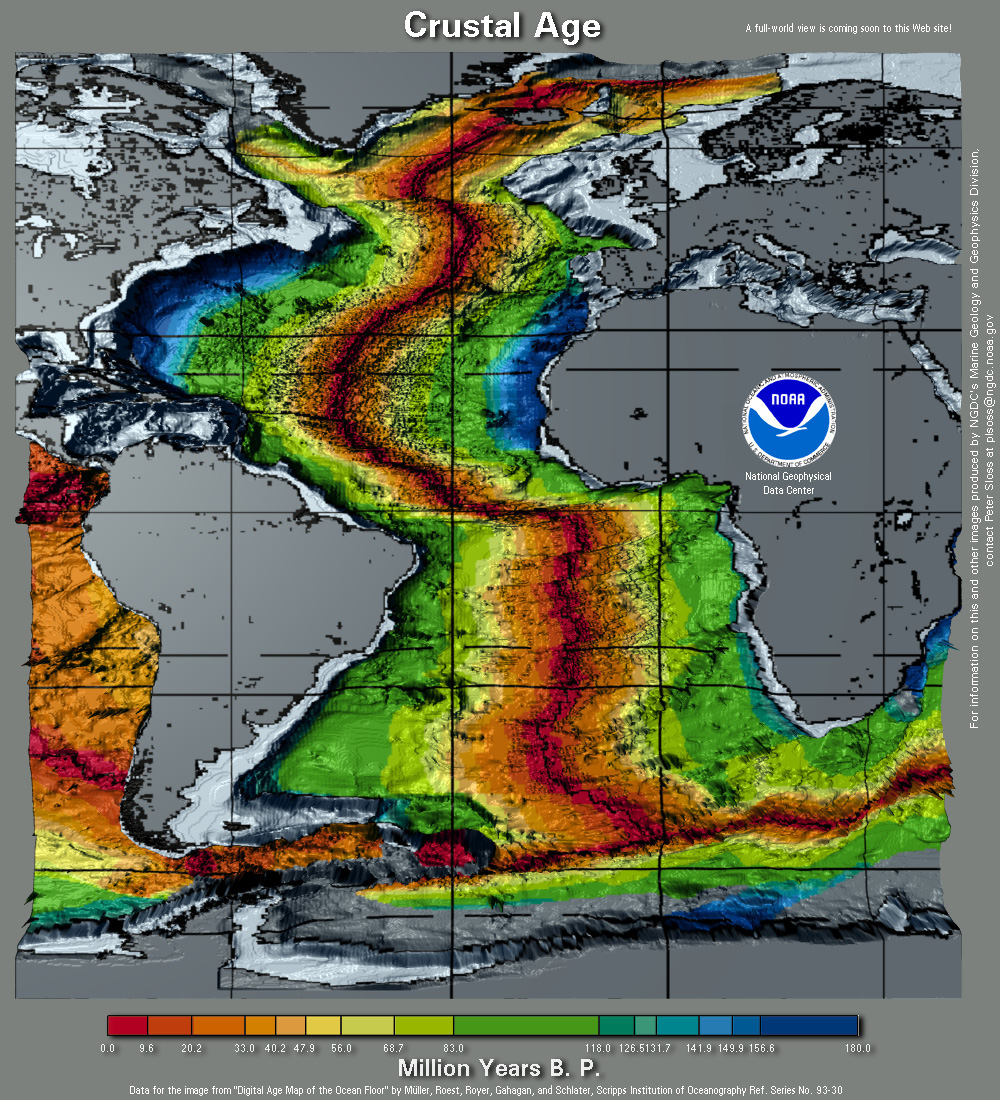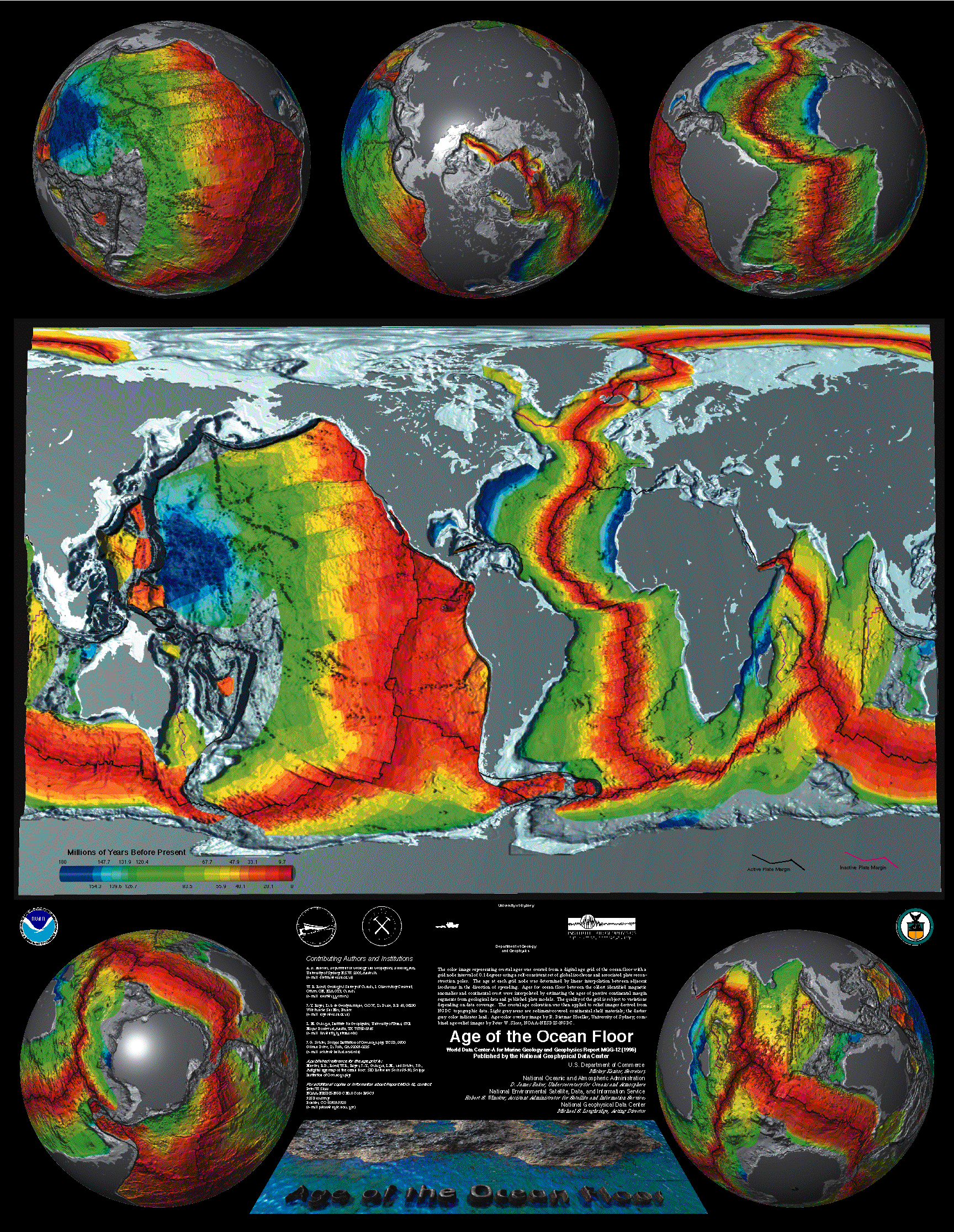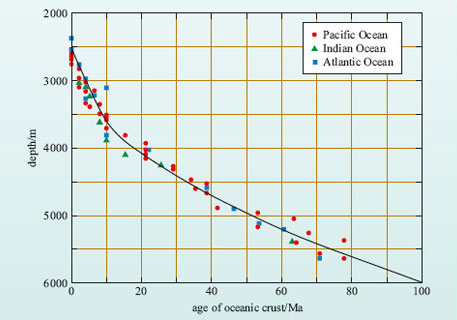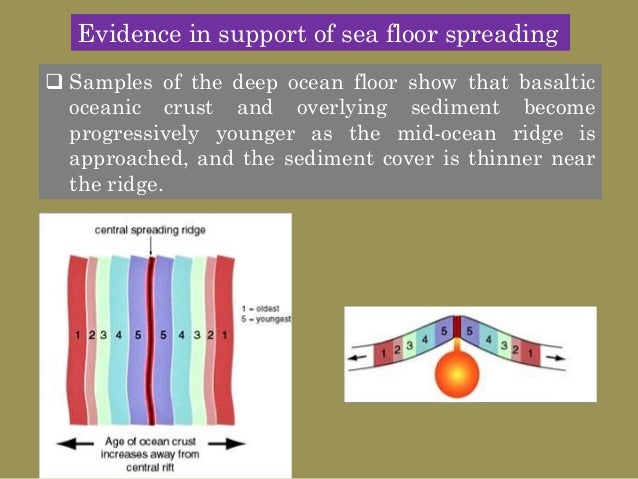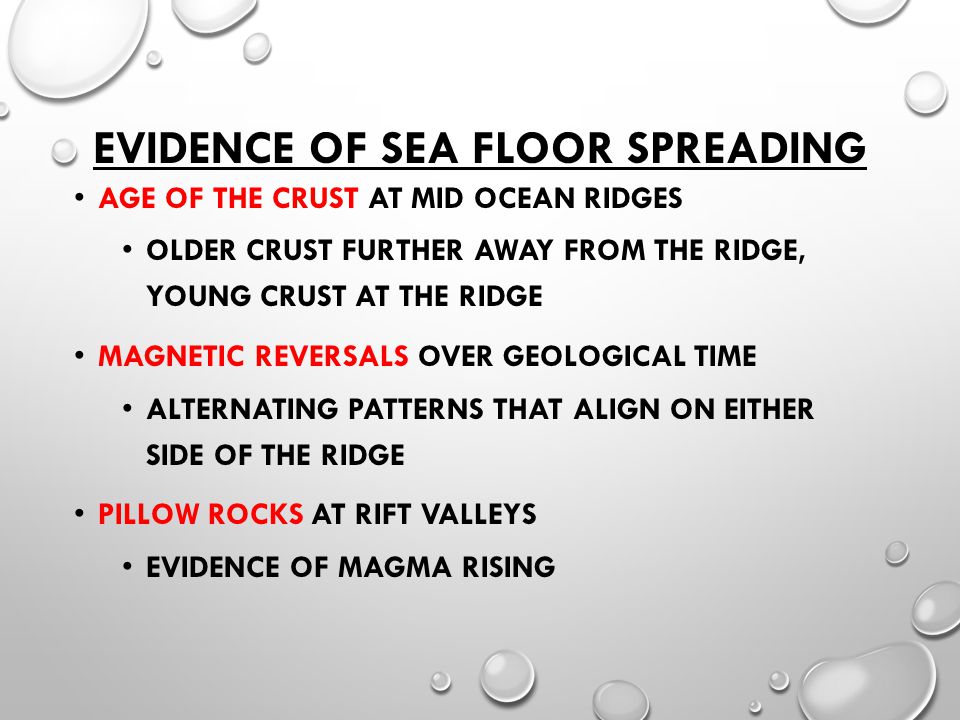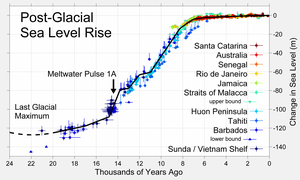Age Pattern Of Ocean Floor

Every once in a while the currents in the liquid core which create the earth s magnetic field reverse themselves.
Age pattern of ocean floor. To get the dependence on x one must substitute t x v ax l where l is the distance between the ridge to the continental shelf roughly half the ocean width and a is the ocean basin age. Basalt the once molten rock that makes up most new oceanic crust is a fairly magnetic substance and scientists began using magnetometers to measure the magnetism of the ocean floor in the 1950s what they discovered was that the magnetism of the ocean floor around. Assuming that the ocean floor moved away from the spreading center at a rate of several centimeters per year they found there was a remarkable correlation between. Oceanic crust is about 6 km 4 miles thick.
It is called a geomagnetic reversal. Answer the questions below. The magnetism of mid ocean ridges helped scientists first identify the process of seafloor spreading in the early 20th century. In 1966 vine and matthews and also morley working independently compared these known ages of magnetic reversals with the magnetic striping pattern found on the ocean floor.
Consider how the age of rocks is related to the shape of the seafloor you saw in step 3. Scientists can determine the age of the seafloor by examining the changing magnetic field of our planet. This has happened many times throughout earth s history. When scientists studied the magnetic properties of the.
Therefore seafloor dating isn t that useful for studying plate motions beyond the cretaceous. This dataset shows the age of the ocean floor along with the labeled tectonic plates and boundaries. It is composed of several layers not including the overlying sediment. This graphic shows several ocean floor features on a scale from 0 35 000 feet below sea level.
Rather than height of the ocean floor above a base or reference level the depth of the ocean is of interest. Continental shelf 300 feet continental slope 300 10 000 feet abyssal plain 10 000 feet abyssal hill 3 000 feet up from the abyssal plain seamount 6 000 feet. Because of this correlation between age and subduction potential very little ocean floor is older than 125 million years and almost none of it is older than 200 million years. The following features are shown at example depths to scale though each feature has a considerable range at which it may occur.
The data is from four companion digital models of the age age uncertainty spreading rates and spreading asymmetries of the world s ocean basins. Age of earth s oceanic crust the age of earth s oceanic crust can be presented to show the pattern of seafloor spreading at the global scale. Oceanic crust the outermost layer of earth s lithosphere that is found under the oceans and formed at spreading centres on oceanic ridges which occur at divergent plate boundaries. Measurements of the thickness of marine sediments and absolute age determinations of such bottom material have provided additional evidence for seafloor spreading.


